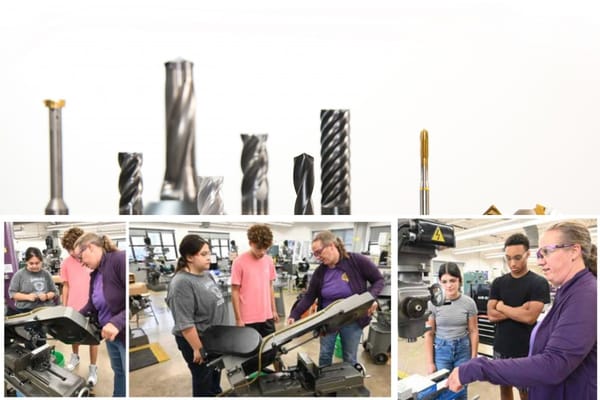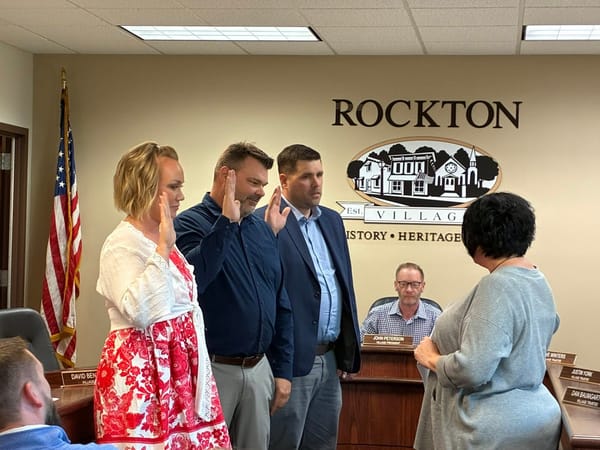Environmental expert: be concerned about years, not days, of exposure to chemicals
Several days of smoke, as in Rockton, is not what Dr. Peter Orris worries about.

At a June 29 Zoom meeting sponsored by the Sierra Club, Rockton area residents heard about the problems that might be caused by the Chemtool disaster. Dr. Peter Orris of the University of Illinois at Chicago School of Public Health said that the greatest danger from toxic chemicals comes after years of exposure, not a few days as in the case of the Chemtool fire that burned June 14-23.
For free local news updates by email each day and continuing coverage of the fire's aftermath, subscribe to Roscoe News.
As an example, Dr. Orris told how experts found high levels of heavy metals in sludge that had been washed into New Orleans after Hurricane Katrina. Then they analyzed the soil that had been in New Orleans before the hurricane, and found high levels of heavy metals.
Dr. Orris said the Chemtool fire at 1165 Prairie Hill Road in Rockton is unlikely to cause health problems in the years to come. For now, different people have different reactions to smoke, but wearing a N95 mask should prevent you from breathing in particles. Gardeners should be aware that digging in the ground increases exposure to any pollutants, but they were probably there before the fire. And "you should always wash your vegetables," he said.
Dr. Peter Orris is Chief of Occupational & Environmental Medicine at UI Health, with more than four decades' experience. He served in the National Institute for Occupational Safety & Health (NIOSH)/Centers for Disease Control (CDC) and as adviser to the World Health Organization (WHO) and to many other groups and companies. He continues to help patients with health concerns related to environmental exposures in the workplace and community.
However, the fire was not the only environmental hazard at the 180-acre Chemtool facility. Formerly owned by the Beloit Corporation, the EPA placed it on the Superfund program’s National Priorities List, or NPL, in 1990. From 1957 until 1999, the Beloit Corporation manufactured paper-making equipment there, which resulted in contaminating soil and area groundwater. The EPA made a long list of contaminants of concern (COC) at the site, though at the former research center portion at 1165 Prairie Hill Road, cleanup was completed by November 2018.
To deal with the contamination at the manufacturing facility, the Beloit Corp. installed a groundwater pump-and-treat system in 1996 but filed for bankruptcy in 2000. The Illinois EPA began operating the system in 2002 and the EPA and IEPA expanded it in 2008. Chemtool significantly upgraded the facility when they relocated some of its distribution and field support operations to the site in 2008. The EPA says, "The primary potential health threat to people is from consumption of contaminated groundwater. Exposure pathways are under control."
Now the Lubrizol Corporation, which bought Chemtool in 2013, is focusing on cleaning up after the fire. Damage assessment teams went to work on June 22 in the one-mile radius around Chemtool, which was under a mandatory evacuation order. For returning residents, the Winnebago County Health Department website offers advice on dealing with debris or soot.
WREX obtained an annual fire inspection report from November 20, 2020 that said that the facility was not "completely sprinklered" and "properly protected." A Lubrizol spokesperson said, "The Rockton site was in compliance with applicable regulations, and regular visits were made by the proper authorities. We did not have sprinklers in the immediate area we believe the fire started based on our to-date investigation, though we did have sprinklers in other areas of the site."
The Illinois EPA's website says they found few problems in the test results for air, soil, and water near the site, except for water samples collected at the Village of Rockton Sewage Treatment Plant and from the contents of an onsite frac tank, which had remained contained on the property. They said, "The sample collected on June 16th at the Village of Rockton STP contained ammonia, copper and zinc at levels exceeding the applicable water quality standards and total suspended solids that exceeded the Illinois Pollution Control Board’s effluent standard. The sample collected from the onsite frac tank on June 15th, which was not released into the environment, contained elevated levels of boron, phenols, zinc, and silver."
The Village of Rockton says, "The IEPA’s Division of Public Water Supplies has no reservations with the Village of Rockton resuming normal operation of the water tower for the municipal/public water supply, and it was returned to regular service on June 24th."
On the first day of the fire, U.S. EPA and Illinois EPA had strongly warned Chemtool not to use PFAS-containing foam. According to the EPA, PFAS build up in the human body for long periods of time and have been linked to possible health problems, especially thyroid hormone disruption, increased cholesterol levels, effects on the immune system, and cancer. But US Fire Pump, the private firefighter contractors hired by Chemtool, used PFAS-containing foam for roughly three hours on June 15. On their webpage, a Lubrizol spokesman said fluorinated foam is twice as effective as non-fluorinated foam in suppressing this kind of fire quickly, and that they took steps to contain and control it before they started using it.
The Illinois EPA says, "No results from PFAS samples collected on June 17th and 18th were detected above Agency Health Advisory levels, except for the June 17th sample collected at a location downstream of where firefighting foam had back flowed into the Rock River. At this location, the PFAS analytes known as PFOA and PFOS were detected at or above Agency Health Advisory levels." Currently, their most recent test results are from June 21. Their website says, "The Agency is still waiting to receive results for wastewater samples collected on June 17th, 18th, and 19th." The US EPA stopped testing air quality on June 23.
A local community group, Citizens for Chemtool Accountability, held a public meeting on June 21 at Mary’s Market in Roscoe. Rockton Village president John Peterson, who was at the meeting, agreed to hold a Town Hall, but only if Illinois EPA and Winnebago County Health Department will attend. Alicia Gauer, Senior Director of Global Communications for Lubrizol, wants to send a Lubrizol representative. But Brad Frost at the Illinois Environmental Protection Agency is refusing to send an IEPA representative. Citizens for Chemtool Accountability is asking residents to call Frost at 217-782-7027 to urge him to change his mind.
The Lubrizol Foundation hired Clean Harbors at 877-552-8942 to handle debris removal for local residents. The company has posted reimbursement and debris removal claim forms on its website. But signing the forms may limit residents' rights to sue Lubrizol over the incident. The Collins Law Firm and Miner Barnhill & Galland has filed a class action lawsuit that alleges that Chemtool should have prevented the disaster.
Rockton Fire Chief Kirk Wilson said the fire was caused by mineral oil released by an outside contractor, probably by accidentally striking a valve or pipe with a scissor lift. But the investigation hasn't found out yet what ignited the oil.
Our other Chemtool stories:
- Gov. Pritzker sends National Guard to respond to chemical fire in Rockton
- Lubrizol employees in France think they've seen this smoke plume before
- Chemtool employees still being paid, Rockton still under evacuation order
- Rockton air quality remains stable, Chemtool will pay for debris cleanup and evacuee expenses
- Chemtool fire dwindles, cleanup continues, lawsuits emerge
- Rockton fire chief: Chemtool contractor released mineral oil, ignition occurred





